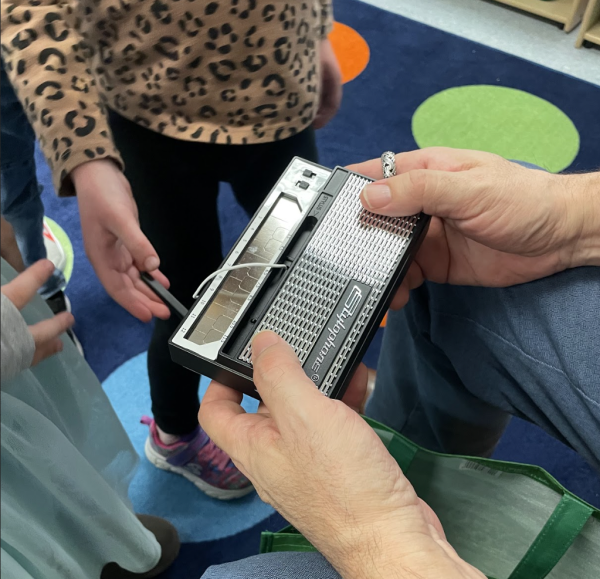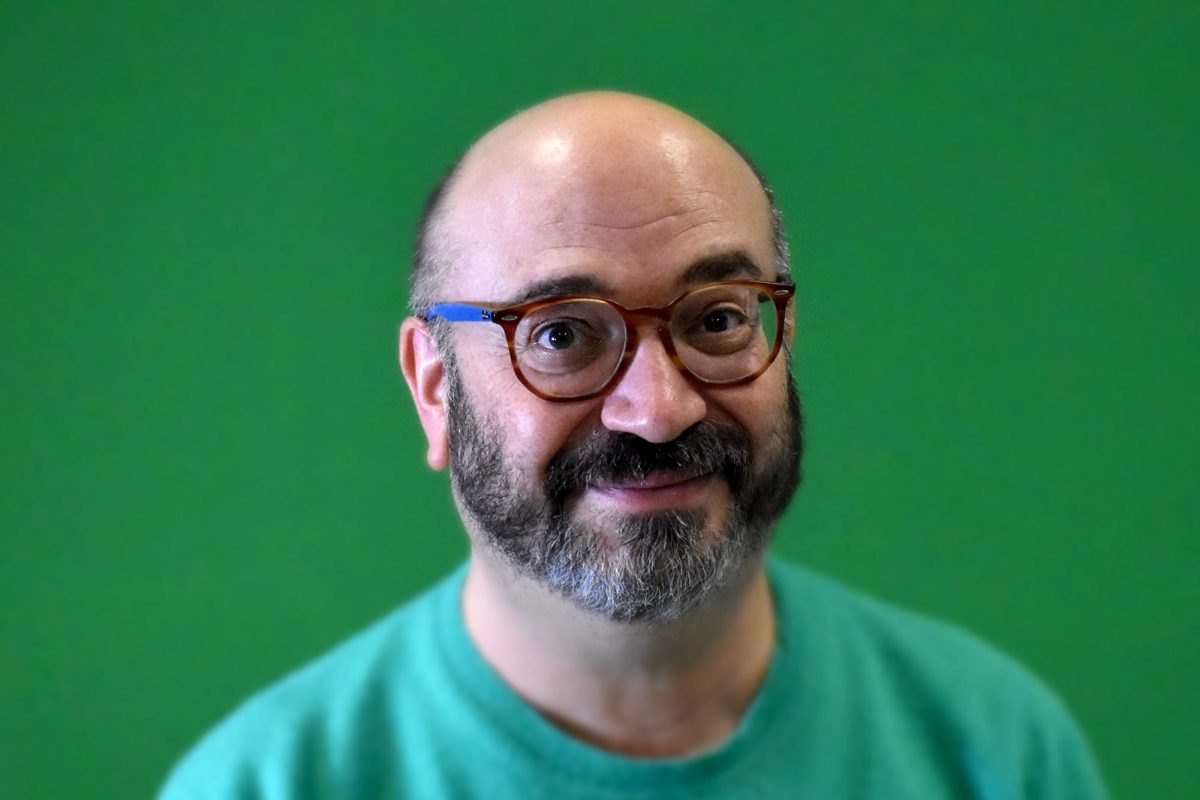With medals and awards decking out the walls, Tenafly High School is truly a museum. Gaudy, golden trophies stand proudly in the glass case by the auxiliary gym while plaques from valedictorians grace the walls by the principal’s office. Yet what makes THS so museum-esque are the numerous murals around the school and the pieces that adorn the art hall. Despite the high school having well-rounded academics and athletics programs, the art program is just as impressive. Like any other program, the driving force behind THS arts is the teachers, one of them being Mr. Andrew Graziano. Graziano highlights how substantial art is to the educational landscape. Whether you are the next Picasso or still struggling to draw stick figures, art education is important to children of all ages and has most definitely made an impact on your life. With his humor and humility, Graziano has left a major impression on me as an art student as well as a member of Tenafly’s student body. He has been vital to the Tenafly art scene, and I was lucky enough to gain some insight into how valuable art education can be.
Before working at Tenafly, Graziano worked at a company making websites for nine years. He couldn’t stand being stuck at an office desk, and he knew he had to find a new path. “I was watching my son grow up and thinking about him moving out one day,” Graziano said. “I thought that if I became a teacher, I would always have kids in my life.” Mr. Graziano brought his creative mind to the school setting of Tenafly when he came to Smith Elementary in 2004, making his smile recognizable to many Smith alumni who currently attend THS. “At Smith school, I was very goofy with the kids,” Graziano said. “I showed them that I was a person who could have fun and make mistakes. Students here are much more mature. They don’t fight over crayons, but motivating some of you is a lot harder than before you all got phones.”
His passion and devotion to not only his career but art itself is evident the moment you step into his classroom. With rows of computers filling Room 231, Graziano teaches students how to put a digital touch to art, utilizing current-day technologies and programs to maximize the boundaries of art. With Digital Art and Animation, the opportunities are endless through the use of Adobe Illustrator and Photoshop. With the aid of Graziano’s comforting persona and witty humor, he brings some fun to the classroom as students can dive deeper into these newer forms of art. Taking a step away from the screen, Graziano is also the teacher of 3D Design. This hands-on art course depicts his true creative nature that stems from his experience in elementary school. The ceramics and paper sculptures are almost reminiscent of the art and crafts done by kindergarteners.
Graziano emphasizes that both digital and traditional art share the same goal. “The goal is for students to learn to be fearless,” he said. “Fearless of failure. It is to understand that failure is a requirement and that if they are not failing then they are probably doing something too easy. This skill will help them move forward in any field they choose.”
Graziano also makes the compelling point that art is as key as any other core subject such as math and science. While knowing the Pythagorean theorem or the steps of photosynthesis may be helpful for some career paths, Graziano argues that art allows children to develop universal skills for their futures. “A study of the arts teaches you how to constantly surprise yourself with new ideas,” he said. “It teaches you that you are never done. There is always room for progress and learning. Ask questions and never be satisfied. Remember, the past is prolog. You will need your creativity to be successful in whatever you decide to do in life. It is how we will move past the past.”

This past Wednesday, I had the opportunity to teach a lesson with the Tiger Tots to see the cognitive skills art helps develop in children. Meeting us for the first time, the kids were hesitant and shy, so Mr. Graziano and I began an interactive activity. Mr. Graziano brought his stylophone, a miniature electric keyboard, down to the classroom. The kids were in awe of the instrument and were intrigued by the sounds it created. They took turns playing with the foreign instrument as Graziano explained the importance of trial and error. We explained to the Tots how it takes time to find the right note, but by taking calculated risks, you can turn a jumble of notes into a harmonious tune. Next, we taught the difference between a line and a shape. After a brief explanation, Mr. Graziano and I began to draw various shapes that resembled the outlines of animals. We would ask the students to guess the animal pictured, and each time, every hand shot up. By drawing a circle with eight squiggles attached to it, students instantly understood that the drawing was an octopus. The mere outline is enough for their minds to understand the reference. It is because of the skills that art teaches that the students can so easily connect the random shape at hand with the animal.
 Some think that art doesn’t teach you such cognitive skills, that recognizing animals from shapes is just common knowledge. Yet, many don’t realize why students are required to take art from ages 5 to 14. If you took away the years of art exposure in schools, there would be a drastic difference in how students learn and perform. Art shouldn’t be referred to as just an elective; it is a core class that builds crucial abilities. Mr. Graziano excels at his career with his zest for art and deep appreciation for its impact. “I love the complete ownership students take for their learning in Mr. Graziano’s classes,” Mr. David DiGregorio, the head of the Art Department, said. “He helps his students add to their available tools and enables them to expand their creative options.”
Some think that art doesn’t teach you such cognitive skills, that recognizing animals from shapes is just common knowledge. Yet, many don’t realize why students are required to take art from ages 5 to 14. If you took away the years of art exposure in schools, there would be a drastic difference in how students learn and perform. Art shouldn’t be referred to as just an elective; it is a core class that builds crucial abilities. Mr. Graziano excels at his career with his zest for art and deep appreciation for its impact. “I love the complete ownership students take for their learning in Mr. Graziano’s classes,” Mr. David DiGregorio, the head of the Art Department, said. “He helps his students add to their available tools and enables them to expand their creative options.”
With this year being his 20th anniversary of working in Tenafly, Mr. Graziano deserves to be celebrated and recognized for the influence he has had on students and the art community as a whole.
















































































































































